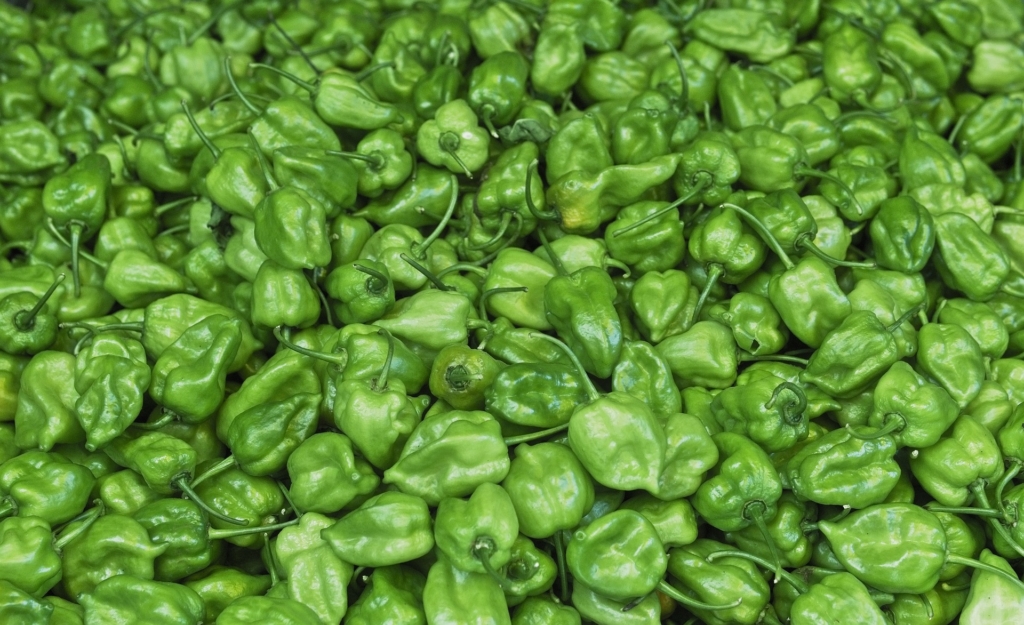Though the brightly colored scotch bonnet pepper is mostly known for its extreme spiciness, there’s a lot more to it than you may think. Pleasantly fruity with a light sweetness and an unforgettable heat, this piquant Caribbean pepper packs a lot of culinary punch.
History
The scotch bonnet pepper gets its name from its resemblance to the Scottish wool tam hat, though the pepper itself has no connection to the country. For most of its history, scotch bonnets have been used primarily in Caribbean and South African cuisine. But as it’s becoming more widely available throughout the world, chefs and home cooks are incorporating this powerful pepper in a wide variety of dishes.
Flavor and Appearance

Scotch bonnet peppers are extremely spicy, with a heat rating that can fall anywhere between 100,000 to 350,000 units on the Scoville scale. This extraordinary spiciness is complemented by its bright and fruity flavor, underscored by a hint of sweetness.
The pepper is stout and often rounded, with defined bumps and grooves. Its smooth and glossy skin ranges in color from warm green to orangey yellow and vibrant red, depending on the stage of ripeness. You can also find varieties that have a deep brownish red hue.
Scotch Bonnet vs. Habanero
This piquant pepper is often confused for its relative, the habanero pepper, as the two are markedly similar in flavor, appearance, and heat levels. However, the scotch bonnet pepper has a more pronounced fruitiness and sweetness that’s missing from its South American cousin, which is why you’ll often see it being paired with fruits in Caribbean dishes.
Uses

Scotch bonnet peppers are just as valued for their vibrant flavor as they are for their fiery heat. You can use them in much the same way you would use other hot peppers, such as to make zesty hot sauces, piquant marinades, or fresh salsas. Jamaican Escabeche recipes utilize scotch bonnets for their tropical heat.
Besides packing on the heat, scotch bonnets will add a wonderful brightness reminiscent of cherry tomatoes or tropical fruit. To take your dishes a step further, you can echo this natural fruitiness by incorporating mango, pineapple, or lime. Acidic flavors, specifically, can help tone down the spiciness and let the scotch bonnet’s sweet flavor shine through.
Feature Image: Flickr user aguichard (CC BY-SA 2.0)



